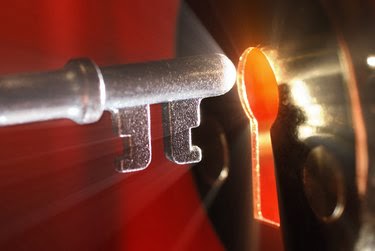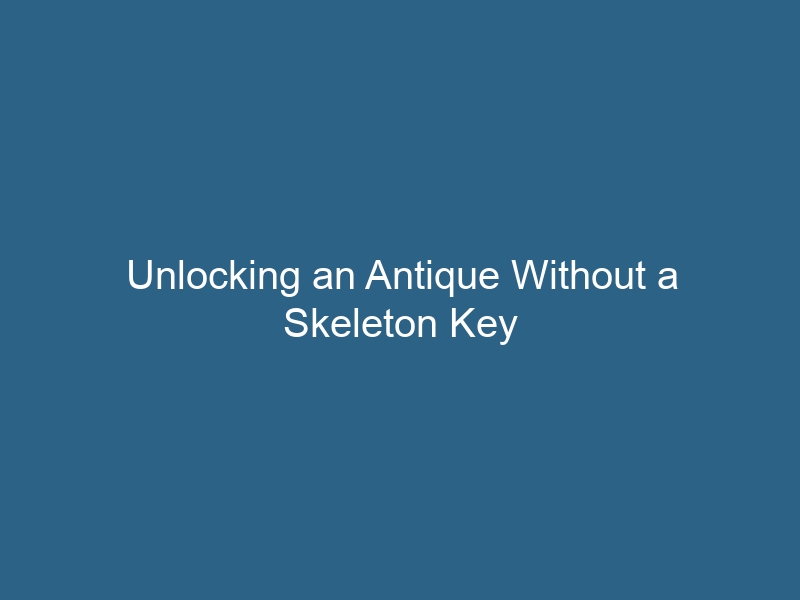Quck answer
To unlock an antique without a skeleton key, you can try the following methods:
1. Use a tension wrench and a lock pick set: Insert the tension wrench into the keyhole and apply slight tension. Then, use the lock pick to manipulate the pins inside the lock until they align and the lock turns.
2. Try a bump key: A bump key is a specially cut key that can be used to unlock many types of locks. Insert the bump key into the lock and gently tap it with a hammer or similar tool while applying slight pressure. This can cause the pins to jump and unlock the lock.
3. Seek professional help: If you’re unsure about picking the lock yourself, it’s best to consult a professional locksmith who specializes in antique locks. They have the expertise and tools to safely unlock the antique without causing damage.
Remember, always obtain legal permission before attempting to unlock someone else’s property, and use these methods responsibly.
Antique furniture, particularly desks, bureaus, and chests, often have original locks. Usually, these older pieces can be easily unlocked with a skeleton key. However, there may be instances where the key has been misplaced or is inaccessible. Fortunately, most American and Western European pieces from the 18th to the early 20th centuries are relatively simple to work with. In fact, many of the old locks were primarily decorative and can be bypassed without a skeleton key. It is even possible to gain access using common household items.

Skeleton Keys and How to Obtain Them
Skeleton keys, also known as “bit and barrel” keys, consist of three main parts: the bow, the barrel, and the bit. The bow is the round portion opposite the end that is inserted into the lock. The bit is the carved end that engages the lock. The barrel is the shaft connecting the two ends.
Reproductions of original functional keys, which are suitable for antique furniture locks, are commonly available for purchase as skeleton keys. Finding the right key for your item may require some trial and error. Alternatively, you can acquire a set of keys with different barrel and bit sizes and configurations. Since the locks on most antique pieces are not complex, an eight- or ten-key set will likely include a key that fits your piece’s lock.
Issues with Old Locks
Despite their relative simplicity, old locks can present a few challenges. Neglect is a common issue that can make a lock difficult to work with. If the lock was not removed before a piece was stripped and refinished, it can become clogged with finishing and debris. To solve this problem, the lock must be removed, thoroughly cleaned, and lubricated with a product like WD-40 before attempting to use a key or pick it.
Another common problem with antique locks is a broken spring. This can cause bolts to move easily without a key, misalignment with the lock’s holes, or failure to lock into the correct position. To address this issue, the lock’s housing around the pin and bolt needs to be disassembled for visual inspection of the spring. Typically, screws secure the lock housing to the frame. These screws can be removed with a properly fitting screwdriver, allowing access to the lock’s interior mechanism. Care must be taken during this process, as the screws on antiques may be severely rusted or corroded.
If a broken spring is found, it can be removed using a small screwdriver or similar tool. The old spring can be replaced with one salvaged from a similar lock or even a piece of a bobby pin.
Seek Advice from a Locksmith or Knowledgeable Antique Dealer
An alternative option to fix damaged locks and gain entry to a locked item is to seek advice from a locksmith who specializes in antique locks or from an antique dealer. If it is possible, it is recommended to bring the item itself to the locksmith or dealer’s shop as it will provide them with more options to repair and find a suitable key for your lock.
If bringing the item is not feasible, you can try taking high-quality pictures of the lock and show them to your chosen locksmith or dealer. Pay close attention to any engraved markings on the lock as this information may assist them in finding a matching key.
Utilizing Paper Clips and Coat Hangers
If you want to attempt to pick the lock yourself, you will need some makeshift tools. Luckily, these tools are probably already available in your home. You can use a stiff and sturdy wire, like a coat hanger, and bend it into the desired shape by creating a 90-degree angle at one end. Make sure to leave enough space on the other end to use as a handle.
For smaller locks, a straightened and sturdy paper clip may fit better into the lock’s mechanism. This is particularly true for smaller items such as jewelry armoires and jewelry boxes, which usually have smaller locks with smaller parts. Similar to the wire coat hanger, bend one end of the straightened paper clip into a 90-degree angle, leaving enough space on the other end to grip as a handle.
Picking the Lock
Carefully insert the wire or paper clip into the keyhole of the lock. Once you feel a bit of resistance, indicating that the wire is fully inserted, cautiously twist the wire. If you feel the lock bolt moving into the open position, it means you have successfully picked the lock. However, keep in mind that this method often requires multiple attempts before successfully opening the item.


